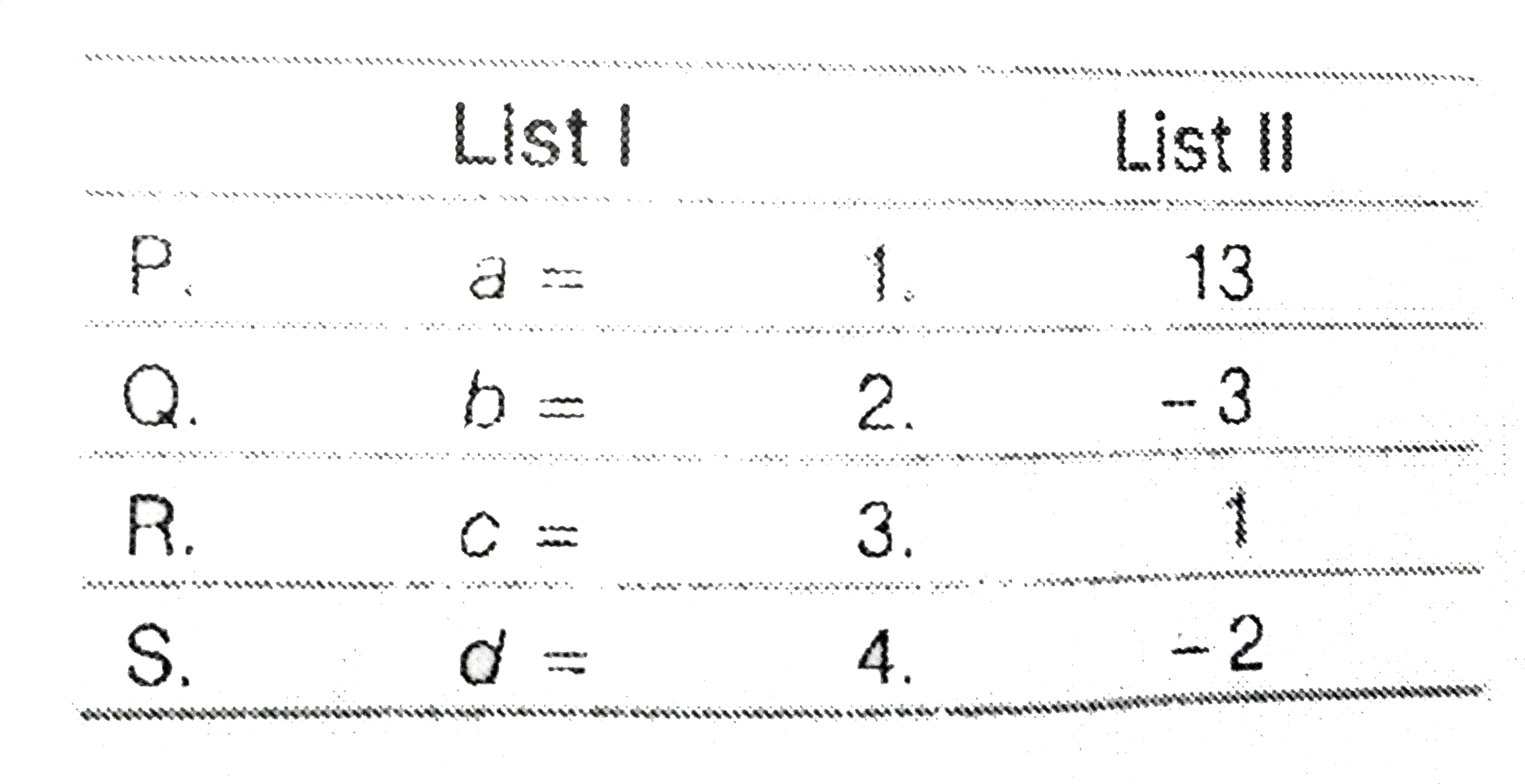For the l:x−13=y+12=z−3−1 and the plane P:x−2y−z=0 of the following assertions the ony one which is true is (A) l lies in P (B) l is parallel to P (C) l is perpendiculr to P (D) none of these
L is ⊥ to II
L lies in II
L is parallel to II
none of these
The correct Answer is:B
We know that a line lies ina plane if every point on the line is a point on the plane. The coordinates of any point on line L are
(3λ+1,2λs−1,−λ+3)
Clearly, 3λ+1−4λ+2+λ−3=0 i.e. the point (3λ+1,2λ−1,−λ+3) lies on the plane II.
Hence the line L lies in the plane II.
Topper's Solved these Questions
- PLANE AND STRAIGHT LINE IN SPACE BOOK - OBJECTIVE RD SHARMACHAPTER - PLANE AND STRAIGHT LINE IN SPACE EXERCISE - Section II - Assertion Reason Type
16 Videos
- PLANE AND STRAIGHT LINE IN SPACE BOOK - OBJECTIVE RD SHARMACHAPTER - PLANE AND STRAIGHT LINE IN SPACE EXERCISE - Exercise
33 Videos
- PLANE AND STRAIGHT LINE IN SPACE BOOK - OBJECTIVE RD SHARMACHAPTER - PLANE AND STRAIGHT LINE IN SPACE EXERCISE - Chapter Test
31 Videos
- MISCELLANEOUS EQUATIONS AND INEQUATIONS BOOK - OBJECTIVE RD SHARMACHAPTER - MISCELLANEOUS EQUATIONS AND INEQUATIONS EXERCISE - Chapter Test
30 Videos
- PROPERTIES OF TRIANGLES AND CIRCLES CONNECTED WITH THEMBOOK - OBJECTIVE RD SHARMACHAPTER - PROPERTIES OF TRIANGLES AND CIRCLES CONNECTED WITH THEMEXERCISE - Chapter Test
55 Videos
Similar Questions
Consider the line L given by the equation x−32=y−11=z−21. Let Q be the mirror image of the point (2,3 –1) with respect to L. Let a plane P be such that it passes through Q, and the line L is perpendicular to P. Then which of the following points is one the plane P?
View SolutionConsider the lines
L1:x−12=y−1=z+31,L2:x−41=y+31=z+32 and the planes P1:7x+y+2z=3, P2:3x+5y−6z=4. Let ax+by+cz=d the equation of the plane passing through the point of intersection of linesL1 and L2 and perpendicualr to planes P1 and P2. Match List I with List II and select the correct answer using the code given below the lists.

View Solution
Knowledge Check
Given the line L: x−13=y+12=z−3−1 and the plane ϕ:x−2y−z=0.
Statement-1 lies in ϕ.
Statement-2 L is parallel to ϕ.AStatement 1 is true, Statement 2 is also true, Statement-2 is the correct explanation of Statement-1.BStatement 1 is true, Statement 2 is also true, Statement-2 is not the correct explanation of Statement-1.CStatement 1 is true, Statement 2 is false.DStatement 1 is false, Statement 2 is trueIf the line x−12=y+31=z−5−1 is parallel to the
plane px+3y−z+5=0, then the value of p -A2B−2C12D13If line L:x1=y2=z3 and plane E:x−2y+z=6, then the line L
Ameets the plane E obliquelyBlies in the plane ECmeets the plane E at right anglesDis parallel to the plane E
Consider the lines L1:x−12=y−1=z+31,L2:x−41=y+31=z+32 and the planes P1=7x+y+2z=3,P2:3x+5y−6z=4. Let ax+by+cz=d be the equation of the plane passing through the point of intersection of lines L1andL2, and perpendicular to planes P1andP2.
Match Column I with Column II.

View SolutionLet image of the line x−13=y−35=z−42 in the plane 2x−y+z+3=0 be L. A plane 7x+py+qz+r=0 is such that it contains the line L and perpendicular to the plane 2x−y+z+3=0 then p=1 (b) q=42 p+q+r=30 (d) p+q+r=0
View SolutionThe intersection of the planes 2x-y-3z=8 and x+2y-4z=14 is the line L .The value of for which the line L is perpendicular to the line through (a,2,2) and (6,1,-1) is
View SolutionConsider the line L:x−12=y−1−3=z+108 and a family of planes P containing the line L. The member of the family of planes P which is situated at a maximum distance from A(1,0,0) will be
View SolutionConsider a plane P≡2x+y−z≡0 a line x−32=y+1−3=z−2−1 and a point A(3,−4,1). L2 is a line passing through A intersecting L1 an parallel to the plane P
Plane containing L1 and L2 is
View Solution
